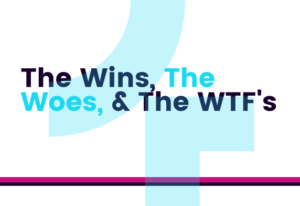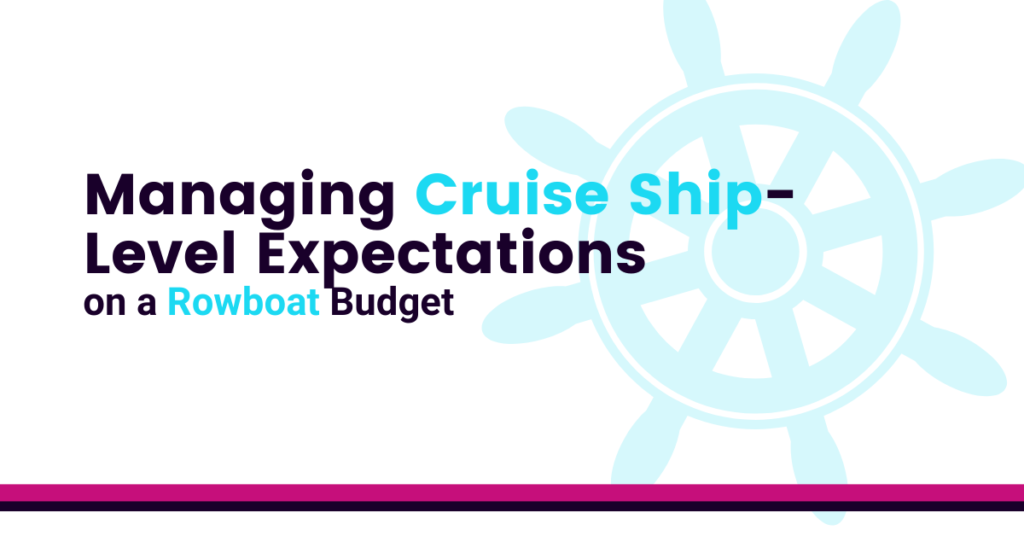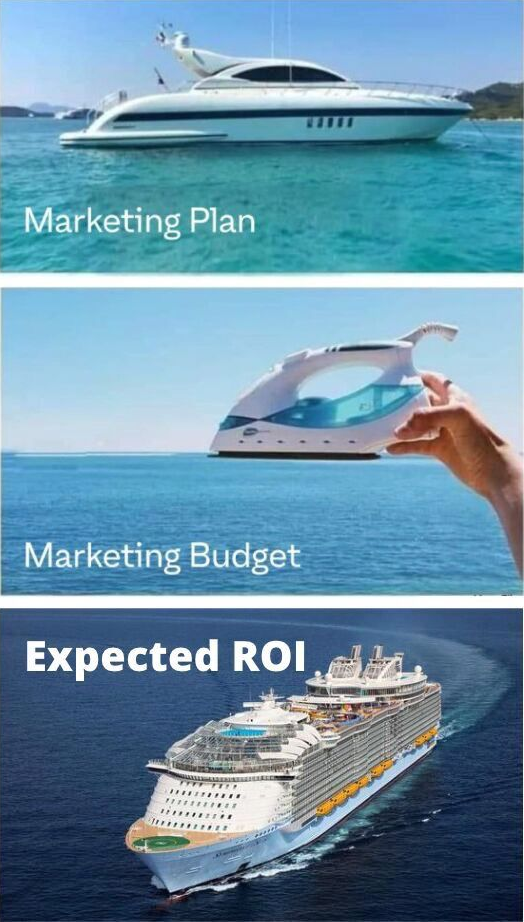

If you’re a B2B marketer you may have seen this meme buzzing around LinkedIn this week:

What’s the saying? “It’s funny because it’s true?” Every quarter, or at least every year, we all put together our marketing plans and budgets and think they seem pretty reasonable in order to achieve our revenue targets. Then, budgets get finalized and we think “there’s just no way.” Then, we sit, wide eyed at the end of the quarter when we realize the expectations for results were wildly different than the budget allocation would indicate.
So, we laugh. And we commiserate. But, what do we do about it? At 4AM we’re advising clients everyday on how to get the most out of the limited budgets they have set aside for marketing.
Here’s the approach we take:
Resist the Urge to Start in the Middle
It’s natural for early stage companies to start in the middle when it comes to marketing. By “the middle” I mean, go straight to trying to generate leads. And, who can blame them? The product is ready. They have probably acquired their first few customers through relationship selling, and now the pressure is on to scale.
When we have our initial meetings with new or prospective customers, we ask a lot of foundational questions that (some may think) have nothing to do with demand-generation. Questions like:
- Who is your buyer persona?
- Can you walk us through your messaging?
- What problems are you trying to solve for your customers?
- What are your core differentiators that make you better than your competitors?
- What benefits do your customers say they get from using your product?
Because the truth is, if you haven’t at least come to a reasonable hypothesis on the answers to these key questions, demand-gen is going to be very hard. I briefly touched on the playbook we use at 4AM in my last post; in it we stress having some core things in place ahead of planning your demand-gen strategy:

Market
Understanding your Ideal Customer Profile (ICP), the segments you’re targeting (i.e. industry, company size, etc.), and the competitive landscape, are foundational to developing your messaging. Knowing who you are talking to, what problems they may have, where they go to learn and which competitors they may go to for solutions, are all key inputs into developing messaging that will resonate with them.
It is also vital for demand-gen teams so they are able to develop programs that will put that message in front of the right people, in the right place, hopefully at the right time.
Message
Brand is important for every company, and especially for early stage companies. Even in B2B, people want to buy from people. So, developing a brand, tone and voice in the market make people feel like they’re getting to know you.
From there, your messaging is how you talk about the company, the product(s), and the value they bring to customers. Making this crisp, clear, and easy to understand is key to driving conversion for your programs down the road. And, documenting it makes it easier to ensure everyone from your CEO, to your marketing programs manager, to your BDRs, are all talking about your company using the same core message. The repetition helps it stick.
Content
You’re Ready for Demand-Gen!
How to develop a full demand-gen plan is a topic for our next blog post, but with the above foundational elements in place, a demand-gen team will have what they need to execute the right mix of programs no matter the budget.
At least then when you’re presented with an iron and told to turn it into a cruise ship, you have a fighting chance of ending up back at the modest yacht you planned for.
Of course, 4AM can help. We deliver a SaaS platform and a consultative approach to help teams strategize, organize and optimize their go-to-market plans.
So, if you found yourself laughing, and then maybe face-palming when you saw the meme, we’re here for you.
Reach out, we’d love to help.
Interested in trying the 4AM Platform for free? Create an account and let us know what you think!
By: Shandra Gemmiti
CMO


